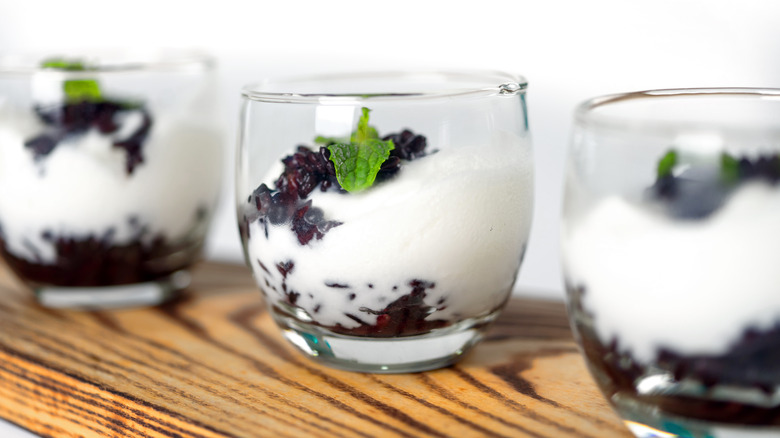The Vietnamese Yogurt Dish That Stars Fermented Sweetened Condensed Milk
When picturing regional yogurt preparations, varieties from Bulgaria or Greece likely first come to mind. However, Vietnam has its own distinct rendition, referred to as sữa chua, which translates to "sour milk." Typically, dairy products are less common in East Asian food, with this preparation likely emerging by way of French influence. Nowadays, it's a beloved part of Vietnamese cuisine, sold as street food, in stores, and crafted at home.
Sữa chua's distinct quality is all in its incorporation of condensed milk, oftentimes in addition to normal milk. Like other yogurts, the mixture is fermented, but the result takes on a sweeter taste and smoother texture. Its preparation involves only a couple of components, which makes it a customizable dish. And it's easy to nail a balanced flavor, with the finished product forgiving in taste. No surprise sữa chual has long been a beloved homemade food, oftentimes evoking childhood memories. Plus, it can even be frozen for an ice cream-like treat.
How Vietnamese yogurt is made
Vietnamese yogurt comes in several forms, including a solely milk-based variant, another made with condensed milk and water, and versions that mix both. To kick off fermentation, a batch of already prepared yogurt, which is often store-bought, is utilized. The food comes together without any special machinery. The utilized liquids are heated and then placed into a warm water bath inside sterilized jars.
The result is partly sweet and tangy, with a consistency on the liquid side. Varying ratios of ingredients create distinct yogurts, and the longer the product is stored, the more sour it becomes. Originally, the food was created using the cans of condensed milk themselves, making it an accessible dish to prepare. It's then enjoyed on its own, with fruit, or turned into a pudding with black rice.
Sữa chua's inclusion of condensed milk mirrors the ingredient's use in certain Vietnamese coffees, like bạc xỉu. This traces to French colonialism during the 19th century, when not much fresh milk was distributed throughout the country. Instead, canned and more durable condensed milk was used for a similar effect. From such a cultural practice, distinctly Vietnamese dishes like sữa chua emerged.

